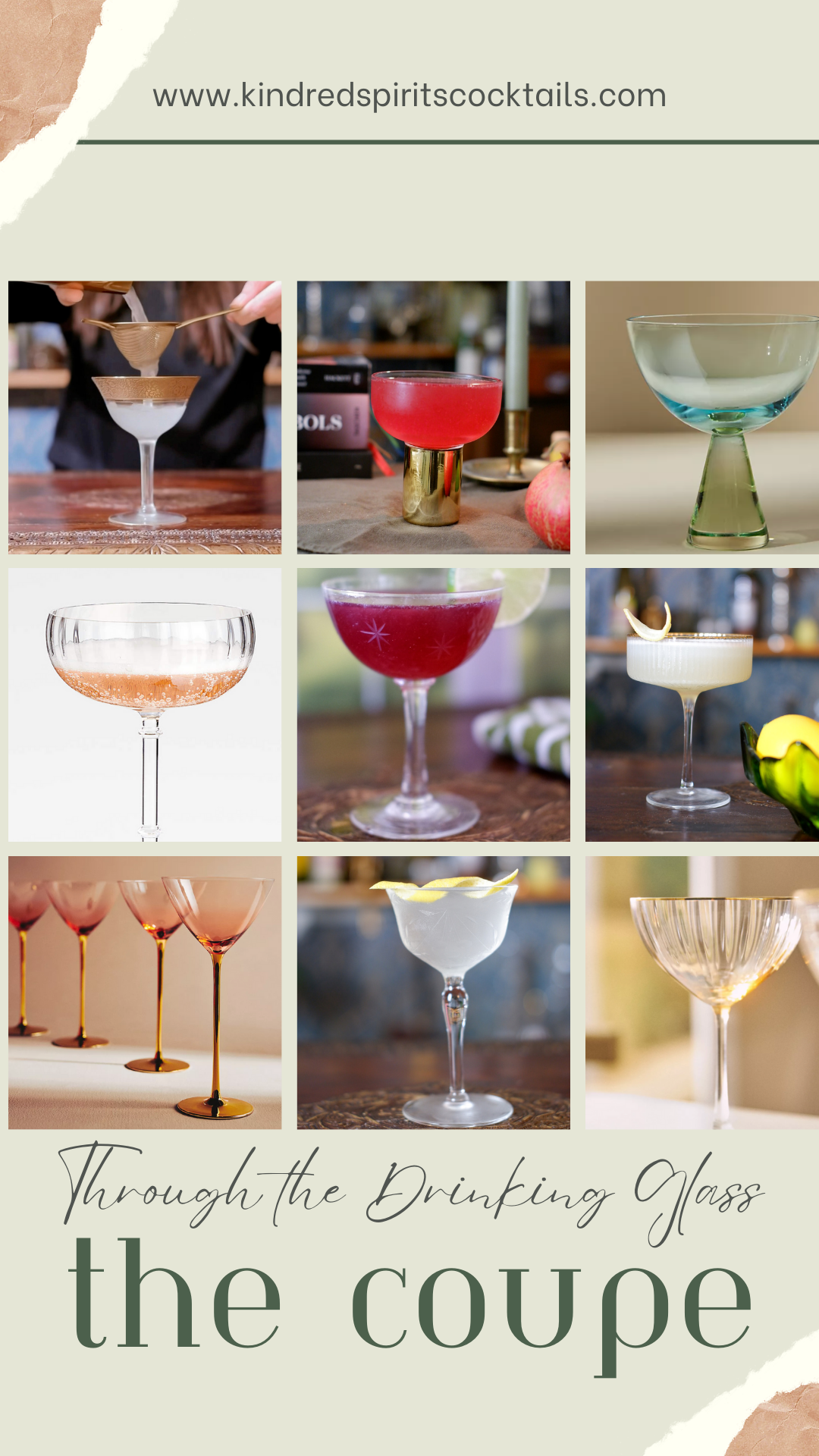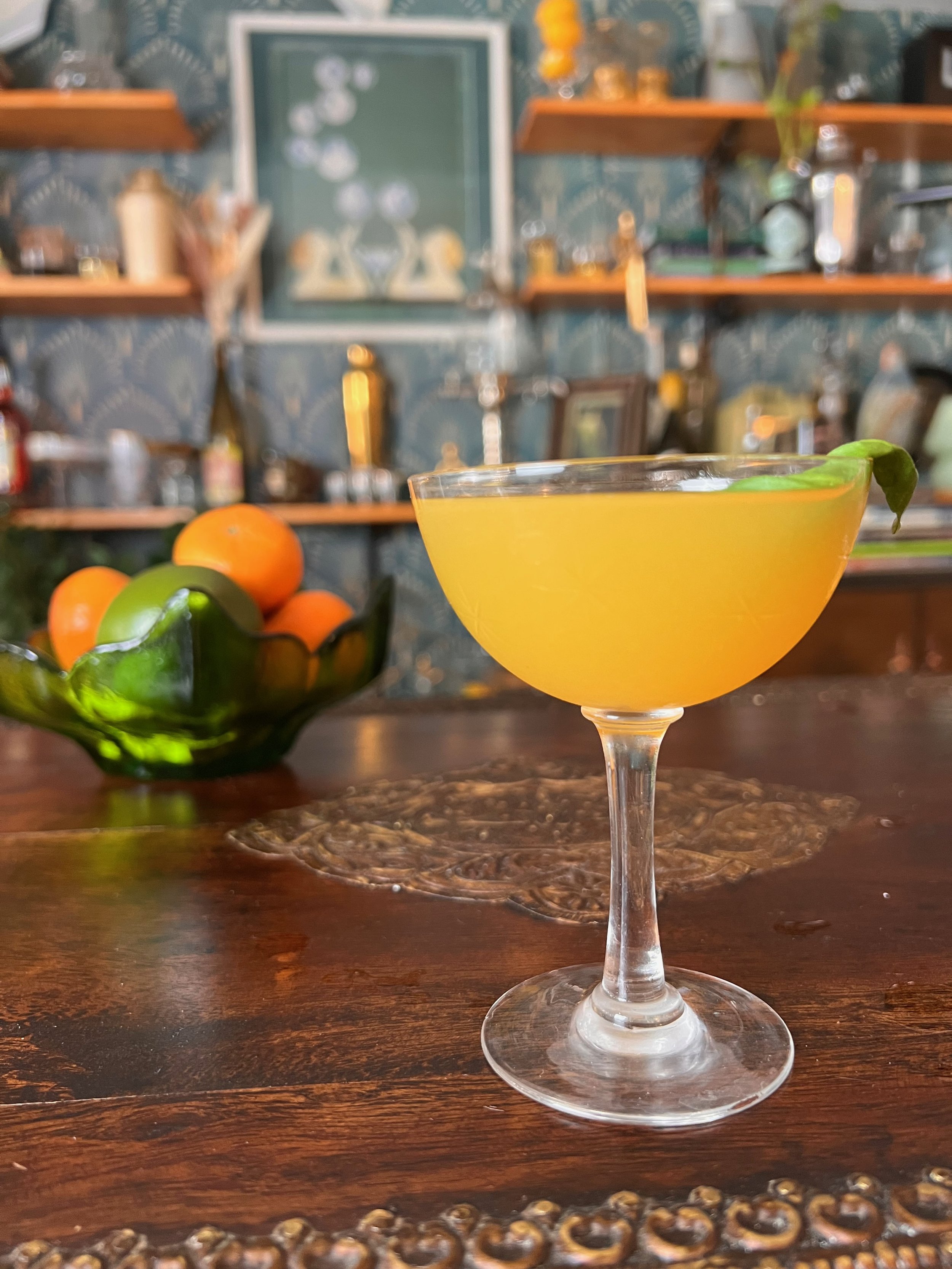through the drinking glass : the coupe history and design
Here is the first installation of Through the Drinking Glass - a new series on glassware! Thank you so much to Luke from Mixing with Friends for the name idea! In through the drinking glass we will look at the history, design, and uses of particular types of glassware. It can be intimidating trying to figure out the right glass for a cocktail when you are first getting started making cocktails at home, and hopefully this will help clarify some things! I am excited to start this series with the coupe - one of the coolest glasses around.
This post may contain affiliate links, please see our privacy policy for details
I mean who doesn’t feel cool as fuck when holding a coupe glass? They are sleek and sexy, they evoke the glamour and indulgence of the 1920’s, and they are super practical as well. The history of the coupe is fascinating and includes persistent rumors related to the breasts of famous women. Honestly, what more could you ask for in a glass?
coupe glass history
What is the coupe glass? The coupe (pronounced koop) glass, was designed in the mid 17th century in England by a Benedictine monk. It was created and used for champagne specifically, which was created by accident in the 1400’s and was looked down upon and primarily consumed by sex workers until the mid 1600’s.
Eventually this changed, and like many things that start out accessible to all it eventually became expensive as those in high society took a liking to it. At the time, champagne was consumed rather quickly, and the coupe glass was perfect for that. Around the prohibition era, the glass was used for classic cocktails and became quite common. As champagne evolved, people became frustrated with the coupe shape as it encouraged bubbles to release more quickly than they liked. This ultimately led to its downfall. In the 1950’s the champagne flute was created and the coupe fell out of style entirely by the 1960’s. It’s popularity was restored during the ongoing recent craft cocktail movement, as its design lends itself to a more stable, less spill prone alternative to the martini glass.
design of the coupe glass
The coupe glass is shaped like a bowl or saucer on a stem. The wide brim encourages sparkling wine to go flat quickly (there was even a study on this in 2012! Hell of a job huh? Link in the sources!). This issue didn’t matter much in the early 20th century when champagne was slammed back like a warm tequila shot on Thirsty Thursday but didn’t make it popular with more high quality champagne. It does make up for this flaw with its generous size. It is able to hold complex cocktails with many ingredients or a large portion of sparkling wine, something the flute cannot do as easily.
There is a persistent, and thoroughly debunked, rumor that the shape of the coupe was modeled after Marie Antoinette’s breasts. However, it was designed before she was born, so it is impossible. It isn’t the first drinking vessel to be associated with breasts, as in Ancient Greece they drank from a cup called “mastos”, which was pretty undoubtedly modeled after those particular curves. While the shape of the coupe doesn’t not resemble a breast, there is no evidence that breasts were intentionally used to inform their design. However, this rumor has taken on a life of its own and, in perhaps a bit of a life imitating art scenario (is myth an art? probably), Kate Moss recently lent her left breast to be used as a model for a coupe for London’s 34 Restaurant.
Mastos
A nipple shaped cup used in symposiums that is shaped like a breast. The design forced drinkers to consume all of the wine in the vessel before putting it down.
coupe cocktails
The coupe glass is used for many cocktails today, especially classic cocktails that have found a resurgence of popularity in the modern cocktail movement, such as the aviation, the bees knees, and the sidecar. However, it is also popular to use the coupe for complex modern cocktails. I used a Fortessa coupe recently for my christmas morning mimosa!
alternatives to the coupe
Of course not everyone has a coupe glass on hand. If this is the case and you are drinking champagne, go for the flute. If you are drinking a cocktail, check out a Nick & Nora glass or a martini glass! If you want to grab a coupe glass so this doesn’t happen to you, check out some below!
There you have it! The first Through the Drinking Glass and a history of the sauciest saucer around. How do you feel about the coupe? What surprised you the most? What are you still curious about? Are you team flute or team coupe? Let me know in the comments below! I’ll leave you with one last boozy science tid — a 2020 study that found that with a coupe style glass, drinkers are more likely to consume more champagne than when drinking from a flute - so really, who needs the bubbles to last?
cute coupe glassware
sources:
https://food52.com/blog/12220-from-cup-to-coupe-a-history-of-our-favorite-champagne-glass
https://chicandtonic.com/blogs/the-tonic/history-of-coupe-glasses
https://wine365.com/coupe-glass-history/
Liger-Belair, G., Bourget, M., Pron, H., Polidori, G., & Cilindre, C. (2012). Monitoring gaseous CO2 and ethanol above champagne glasses: Flute versus coupe, and the role of temperature. PLoS One, 7(2) doi:http://dx.doi.org/10.1371/journal.pone.0030628
Tess, L., Rachel, P., Gilchrist, P. T., Pilling, M., & Marteau, T. M. (2020). Glass shape influences drinking behaviours in three laboratory experiments. Scientific Reports (Nature Publisher Group), 10(1) doi:http://dx.doi.org/10.1038/s41598-020-70278-6





